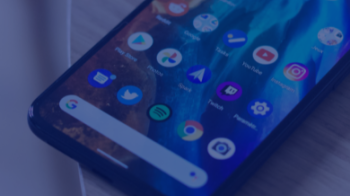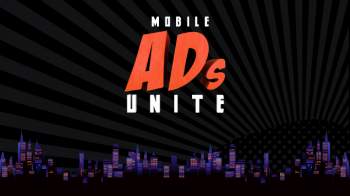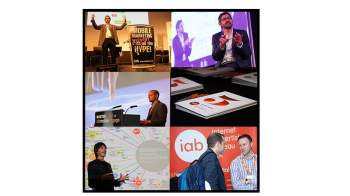How retailers can use mobile data to help drive shopping behaviour
Warren Mills
Warren Mills, Client Partner: Entertainment, Media, Retail & Technology at Weve, argues that as an industry, we’re increasingly understanding the critical role mobile plays at each stage of the consumer journey.
While these journeys will undoubtedly change and fragment, the role of mobile is here to stay as mobile data plays an ever-important role in how we identify, target and measure retail behaviours.
Historically, we’ve always treated the retail journey as a linear process, with the key aim to move the customer through the funnel: building awareness, driving consideration and intent and, ultimately, encouraging purchase. The importance of loyalty and advocacy were only considered once the customer had been acquired, rather than considered as an integral part of an evolving process.
However, this journey and how retailers communicate with their customers has certainly evolved. Mckinsey’s model breaks down the equal importance of acquiring a customer and retaining them, and how the process is intrinsically linked. The journey is best illustrated as a circular process with awareness, consideration, intent and evaluation key stages in driving acquisition. Then, once a customer has made a purchase (whether online or offline), they enter the loyalty loop as the retailer seeks to strike a bond through valuable CRM strategies. Crucially, this data is fed back into the acquisition phase to help with future campaign planning.
What we’re only just scratching the surface of as an industry is the integral role mobile plays at each stage of the cycle. While we can’t predict with 100% accuracy what future purchase cycles will look like, we do know that mobile’s role is here to stay, as the power of mobile data continues to be exponentially influential in how we identify, target and measure customers retail behaviours.
Awareness
Prior to the awareness stage, the consumer has no particular product in mind beyond their broad subconscious consideration set. We can assume they’re open to suggestions within this set, but the ad space is hugely cluttered. The key? Creating cut through.
To say our mobiles are an extension of ourselves is no longer hyperbole. We check them hundreds of times a day, making them a real-time tool in driving awareness. In fact, Weve’s Primary Retail Research 2017 suggests that 63% of customers consider their mobiles to be the most important device for driving awareness (vs desktop, tablet or going in store), with 67% browsing regularly for retail inspiration. At this stage, it’s all about driving reach, using tools such as social media, video and section targeted display. Timing can be crucial, which is why channels such as O2 messaging can provide unrivalled cut through and immediacy: Weve’s Primary Messaging Research 2016 found that 74% of UK adults open messages within the first five minutes of receiving them, so it can certainly cut through the noise!
Location and timing are key factors to consider at the awareness stage to ensure you serve the right message to the customer at the right time. Each campaign is different, but it might be more effective to serve a message to a customer when they’re at home on WiFi with more time to research, rather than when they’re actively on the high street in intent mode.
Through the unique functionalities of the phone using the accelerometer and gyroscope, mobile advertisers can create immersive experiences allowing customers to engage with the retailer, further driving awareness and pushing them through to the consideration and intent stages.
Consideration
Now the customer has some idea about what they want to buy, but is unsure of specific models, specs, brands or retailers. They’re open to suggestions.
At this stage, we see 67% of customers researching and comparing prices and specs on their phones, with 57% stating their mobile as the most important device for doing so. There are a number of mobile tools in our arsenal here, with targeting and personalisation being crucial to suggest the right product based on a customer’s interests and preferences.
Our research suggests that customers are not only comparing prices and specifications on their mobile but also checking retail apps, reading reviews, and are keen to find a good deal. Mobile coupons can play an important role at this stage, with discounts and incentives driving customers in store – 91% find messages with money off coupons useful and 1 in 3 have downloaded a coupon to their mobile. With technology developing to allow customers to save these coupons and vouchers to their MWallet, this will only increase.
Intent
Once the consumer has compared prices and specifications, they know exactly what they want to buy and so the search for discounts and stockists commences.
75% searched to find a product or store location using their phone in Q4 of 2016, and 64% claim that their mobile is the most important device for doing so. SEM/SEO plays a massive role here for hyper-local store targeting, as well as mobile messaging or mobile display using live and historic location data.
Our research suggests that 27% have recently used their phone to check if a product was in stock, 64% searched for deals for a specific product they were looking for and 56% searched to find the nearest retailer that stocks their product so accessing accurate location data is critical here. Of you can understand where people are in real time, and where they have frequently visited in conjunction with their home location, you can serve relevant, targeted and useful messages to drive an immediate action.
Purchase
The customer has decided on their product, found it for a reasonable price and located a retailer that stocks it (whether offline or online). It feels like only a few years back that customers were reluctant to transact on their phone, instead reaching for their tablet or desktop device to make that final purchase. However, now that mobile has taken over desktop, these customers are actively purchasing on their phones: our research suggests that 69% of customers bought something using their phone in Q4 of 2016, with 44% claiming it as the most important device to buy something with.
As a mobile network operator, we understand the paramount importance of making this process easy, safe and secure for our customers, with heavy investment into secure mobile payments (including our Charge2Mobile product, allowing customers to easily buy and add a product to their mobile bill). That said, 80% of all retail transactions are still happening in physical stores, and our research shows that nearly half of our customers still enjoy the experience of visiting a store and want to see items before buying them.
Asking our customers to consider a recent purchase they made in store, one in five went through the entire pre-purchase process on their mobile (browsing for inspiration, researching to compare prices and look for deals, discounts and store locations) and then went in store to make the purchase. Traditionally, this sale wouldn’t be attributed to any media, but new technology helps retailers track a customer through the purchase phase and beyond.
Within O2, we have a number of unique pieces of technology that aid this; small cells, wifi and geo-fences all give us the ability to accurately track if a customer has visited a store location or have been in close proximity to the store. By overlaying third-party transactional data, we can accurately attribute the true value of mobile media, in driving both offline footfall and offline sales.
Additionally, if we can start to distribute unique mobile coupons via messaging or display we can clearly attribute a value of the specific media at an even more granular level, while providing a useful service to customers (91% of our customers said they would find coupons direct to their mobile useful). Once redeemed, the transactional data not only provides us with media attribution but also unique audience insight into customers, helping aid future acquisition planning.
Loyalty
With retailers traditionally investing heavily in acquisition, this critical stage of nurturing your existing base of customers can sometimes get given a back seat. Yet being rewarded for loyalty is important to customers, with 57% regularly using cards and schemes and 51% claiming that they’re an important part of the retail experience.
Within O2, mobile data plays a crucial role in driving loyalty and CRM strategies, using brand and retailer data matches to identify and match users to our customer bases. These users can then be solely targeted, excluded from campaigns, or mirrored to find more customers who look like them. This can help shape bespoke segments, i.e. those who have shopped in the last 7 days or those who have recently lapsed to maintain a highly-personalised customer relationship.
So the purchase cycle has evolved, and will continue to do so as customers become inherently more savvy in how they plan, research and purchase new products. Yet while consumer journeys will undoubtedly change and fragment, mobile data will continue to play an ever-critical role in understanding and shaping customer behaviour.
Related content
Google introduces Privacy Sandbox for Android
Learn moreConsumer control and “common sense” key to tackling mobile ad blocking: IAB UK study
Learn moreIAB UK bids farewell to flagship Mobile Engage event
Learn moreMobile post-click tracking FAQs
Learn more
Fast forward to 2030 with Futurescape
An in-depth exploration of the attitudes, innovations and media shifts that will shape the years ahead and redefine how we advertise by the turn of the decade


